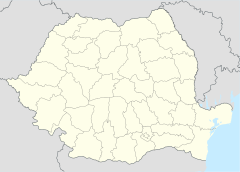| Bran Castle | |
|---|---|
 Bran Castle | |
| Alternative names | Dracula's Castle |
| General information | |
| Type | Fortress |
| Architectural style | Medieval |
| Location | Bran, near Brașov, Transylvania |
| Address | Str. G-ral Traian Mosoiu, nr.24, Bran |
| Country | Romania |
| Coordinates | 45°30′54″N 25°22′02″E / 45.51500°N 25.36722°E |
| Elevation | 2,500 feet (760 m) |
| Owner | Archduke Dominic of Austria-Tuscany |

Bran Castle (Romanian: Castelul Bran; German: Schloss Bran or Die Törzburg; Hungarian: Törcsvári kastély) is a castle in Bran, 25 kilometres (16 mi) southwest of Brașov. The castle was built by Saxons in 1377 who were given the privilege by Louis I of Hungary. It is a national monument and landmark in Transylvania. The fortress is on the Transylvanian side of the historical border with Wallachia, on road DN73.
Commonly known outside Transylvania as Dracula's Castle, it is marketed as the home of the title character in Bram Stoker's Dracula. There is no evidence that Stoker knew anything about this castle, which has only tangential associations with Vlad the Impaler, voivode of Wallachia, who shares his name with Dracula.[1] Stoker's description of Dracula's crumbling fictional castle also bears no resemblance to Bran Castle.
The castle is now a museum dedicated to displaying art and furniture collected by Queen Marie.[2] Tourists can see the interior on their own or by a guided tour. At the bottom of the hill is a small open-air museum exhibiting traditional Romanian peasant structures (cottages, barns, water-driven machinery, etc.) from the Bran region.[3]
- ^ "Dracula - Bran Castle". www.bran-castle.com. Archived from the original on 2023-03-05. Retrieved 2022-01-30.
- ^ "Bran Castle official website". Archived from the original on 2010-03-12. Retrieved 2010-02-24.
- ^ Middleton, Christopher (11 May 2014). "Buy a stake in Dracula's castle". The Daily Telegraph. Archived from the original on 12 May 2014.
